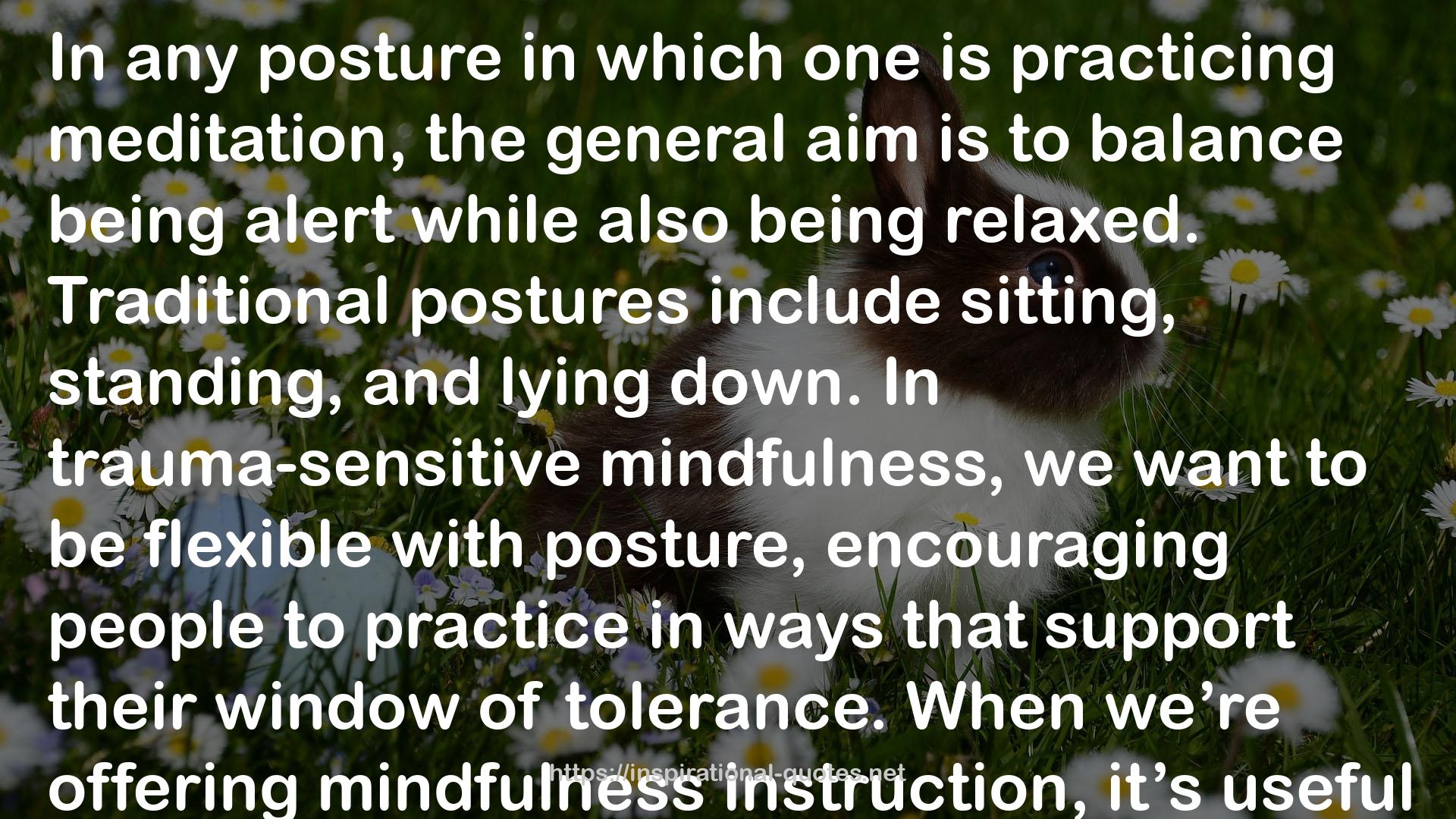" In any posture in which one is practicing meditation, the general aim is to balance being alert while also being relaxed. Traditional postures include sitting, standing, and lying down. In trauma-sensitive mindfulness, we want to be flexible with posture, encouraging people to practice in ways that support their window of tolerance. When we’re offering mindfulness instruction, it’s useful to state these different options around practice, reminding people that it’s okay to move between postures while practicing. In collective spaces, we also want to make sure we have a sufficient number of chairs available for sitting meditation. Lying meditation can present the added challenge of falling asleep during meditation—something that can become distracting if someone is snoring in a meditation hall. Students who engage in lying meditation can raise their hand in the air with their elbow still on the floor. If the meditator falls asleep, their arm falls, ideally causing them to wake up. It’s one suggested way we can guide people to maintain alertness even when lying down. "
― David A. Treleaven , Trauma-Sensitive Mindfulness: Practices for Safe and Transformative Healing
